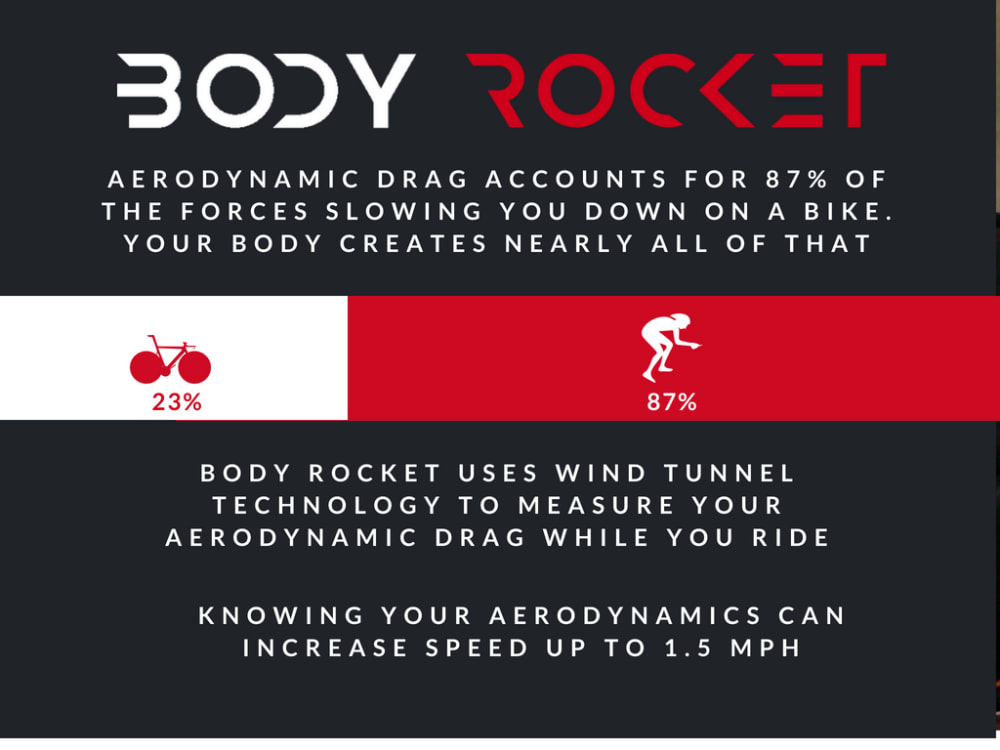Cycling has undergone a digital revolution. Over the last 15 years our bikes have gone from having simple cyclocomputers to basically having an onboard computer. Heart rate, power measurement, GPS, gradient, temperature, it’s all there. But what about the biggest factor of them all? The one that can give you more speed in one day than 6 solid months with a power meter and a top-notch coach?
That’s the question we kicked around at the start of what we now call BodyRocket. What would it take to actually measure a rider’s aerodynamic drag?
In a wind tunnel the drag measurements are taken by placing a force gauge between your bike and the floor, measuring the full drag on bike and rider. On the road you can’t isolate the point between the bike and the road because it’s a constantly changing point on your tires. So people have tried to do the next best thing and measure power going to the road, then back calculate drag. Along the way they have to make assumptions for rolling resistance, chain and other bearing friction, and rider/bike weight. Just to pick one of those, chain friction, the value can vary nearly 5% depending on which gear you’re in (or really how crossed up your chain is) and how worn your chain is. Riders going into a wind tunnel are happy to see a 5% improvement, so building a system with at least a 5% error doesn’t make much sense to us.
Is there another way? Yes! To get high accuracy it’s necessary to measure, not estimate. We looked at the problem and realized that the bike isn’t what people are going into a wind tunnel to improve. The bike, the wheels, and all the components were already designed before the athlete ever enters the wind tunnel. The only way to improve the bike is to buy a new one. Athletes go into the wind tunnel to improve the aerodynamics of their bodies. And there is a way to measure that.
By measuring the force between the bike and rider it’s still possible to get all the important information you would expect from a wind tunnel. What happens when you change handlebar positions or heights? When you slide your saddle forward? Which outfit is faster? What is the most aero you can get before starting to lose power? Plus questions that a wind tunnel isn’t able to answer. Is a teardrop helmet more efficient or do you move your head too much to benefit? Do you start out the race with ideal aerodynamics but slowly get worse as you begin to fatigue? Is the optimum position for a flat race the same as the optimum position for a hilly race? What was your average drag over the course of an event?
Our patented technology is built around this concept and our goal is to answer these questions by bringing constant, real-time aerodynamic data to cyclists at all levels of the sport.
Video
Like this entry?
-
About the Entrant
- Name:Eric Degolier
- Type of entry:teamTeam members:Eric DeGolier
Dan King
Marcus Hoenig - Software used for this entry:Orcad
- Patent status:patented








